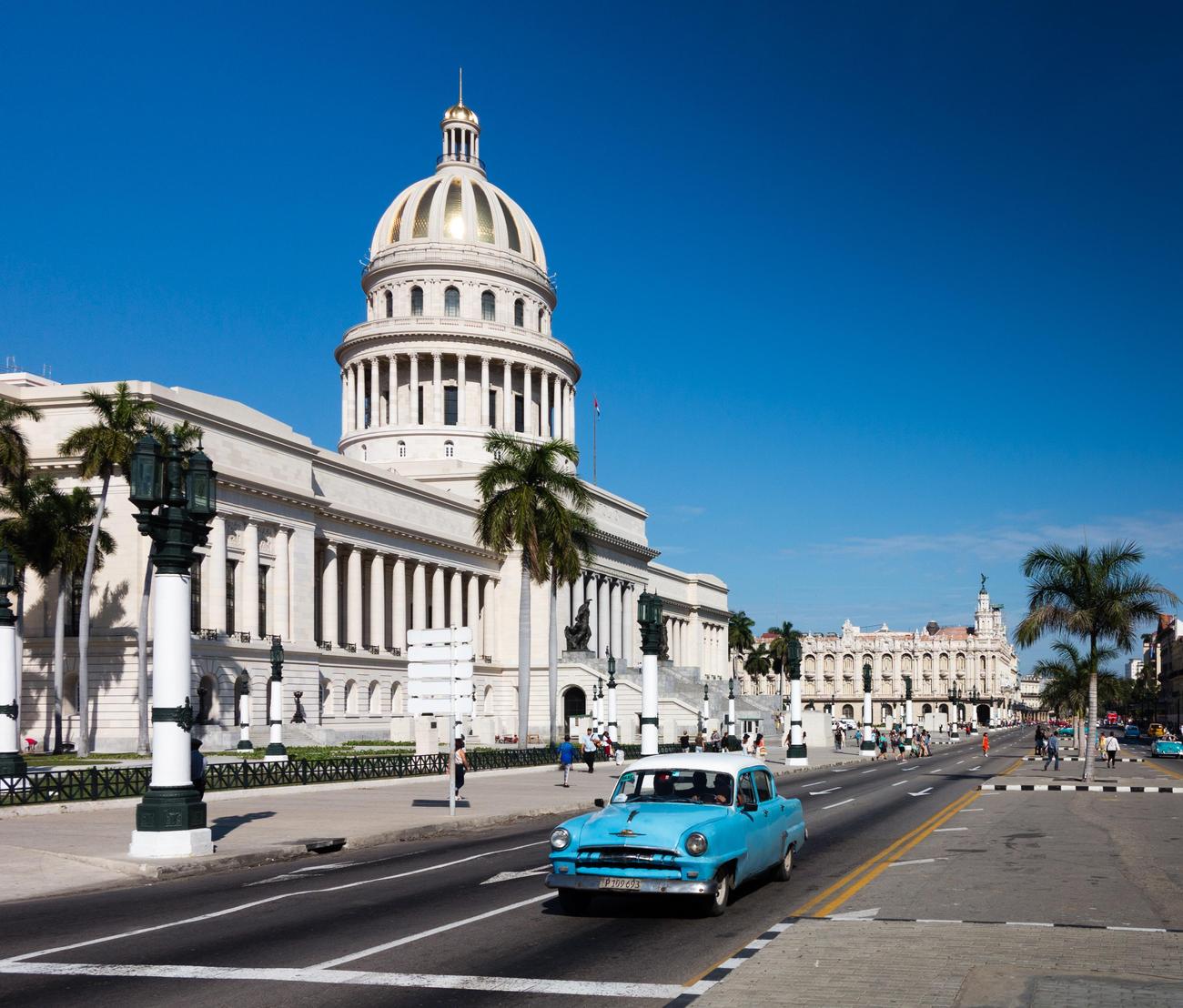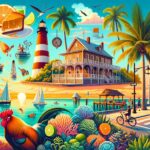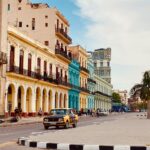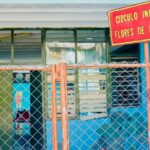Cuba, a land of enchantment and allure, holds within its borders a wealth of captivating stories waiting to be unraveled. In this insider’s guide, we will embark on a journey through the intriguing facets of this vibrant island, exploring its rich cultural heritage and unearthing hidden tales that lie within its diverse tapestry. From the spirited presence of Ernest Hemingway, who made Cuba his home, to the abundance of nine UNESCO World Heritage Sites dotting its landscape, prepare to delve into a world and uncover fascinating facts that will leave you in awe of Cuba’s undeniable allure.
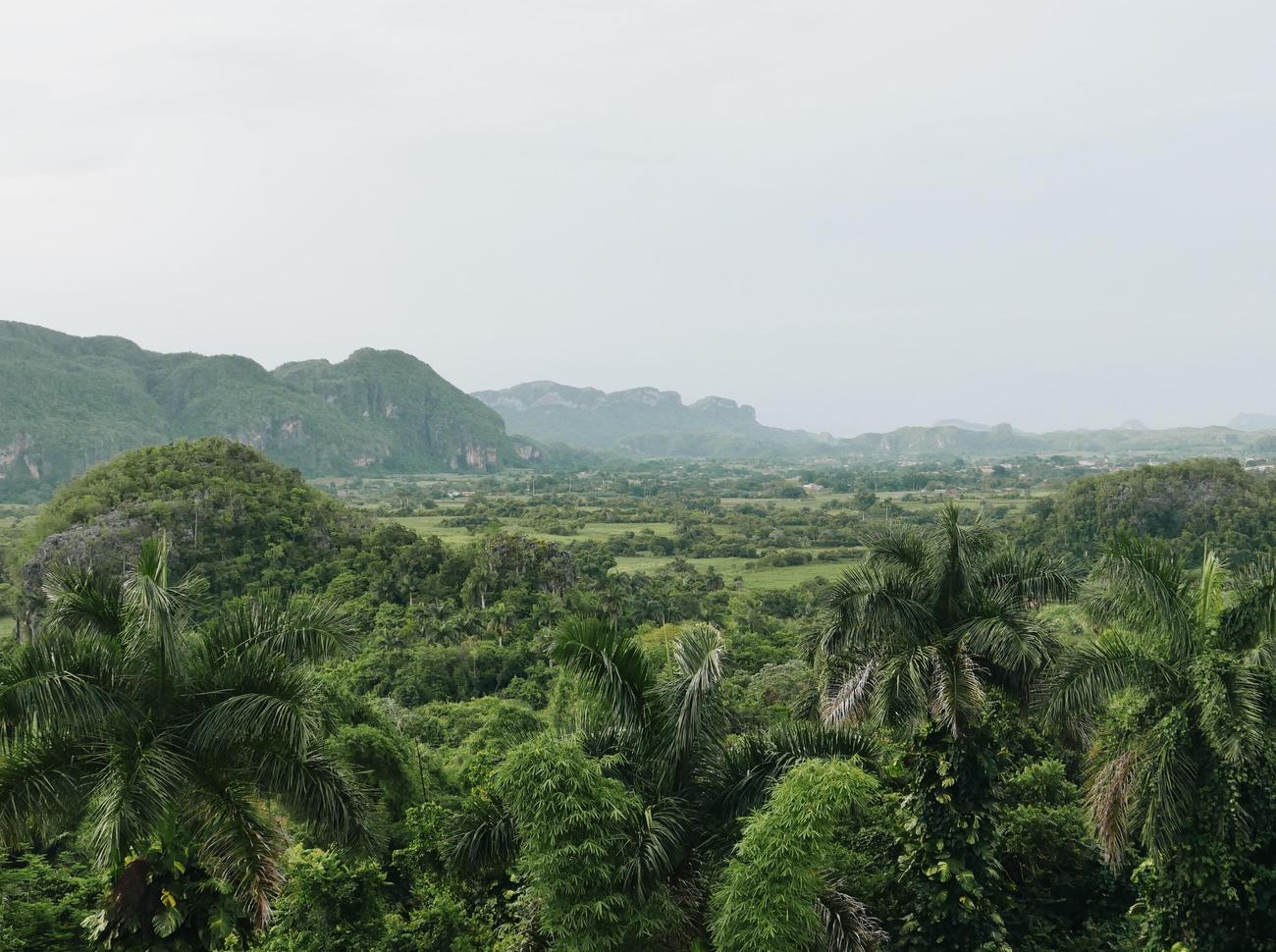
Interesting Facts About Cuba
Cuba, the largest island in the Caribbean, is a captivating destination that holds a treasure trove of intriguing facts waiting to be uncovered. From its diverse landscape to its rich cultural heritage, here are some fascinating insights that will transport you into the heart of Cuba’s enchanting world.
Cuba’s Varied Landscape: Cuba boasts a diverse and picturesque landscape, with its mountains, plains, swamps, and forests. From the majestic Sierra Maestra range to the idyllic Vinales Valley, each corner of this island offers a unique and breathtaking scenery.
A Literary Paradise: Did you know that Cuba has an impressive literacy rate of over 99%? This dedication to education has created a thriving literary scene, with renowned writers like Ernest Hemingway finding inspiration in the country’s vibrant culture and history.
Birdwatcher’s Haven: For nature enthusiasts, Cuba is a paradise. It is home to the world’s smallest bird, the bee hummingbird, along with over 2,500 other species of birds. Whether you’re exploring the lush forests or visiting the pristine beaches, keep an eye out for these colorful creatures.
Beaches Galore: With over 250 sun-kissed beaches and the second-largest reef in the Caribbean, Cuba offers a beach lover’s dream. From the famous Varadero Beach to the hidden gems of Cayo Coco and Cayo Santa Maria, the coastline of this island will leave you awe-inspired.
Symbolic Flag and Meaningful Name: The Cuban flag represents the country’s ongoing struggle for freedom and independence. Its blue stripes symbolize the three parts in which Cuba was divided during its fight for liberty. The white star on the red triangle represents the island’s aspirations for a bright future. Additionally, the name “Cuba” holds a significant meaning – it translates to “fertile land,” reflecting the country’s agricultural richness.
Delicious Culinary Delights: When in Cuba, you must try their national dish, ‘ropa vieja,’ which translates to “old clothes.” This mouthwatering dish consists of shredded beef cooked with vegetables and aromatic spices. It perfectly demonstrates the island’s vibrant flavors and culinary traditions.
A Tapestry of Islands: Cuba is not just a single island; it is an archipelago boasting over 4,000 islands and keys. Among them, the Isla de La Juventud stands out as Cuba’s largest island. These secluded islands offer untouched beauty and hidden treasures waiting to be explored.
Vibrant Culture and History: Immerse yourself in Cuba’s rich cultural heritage, beautifully preserved in its architecture, music, and dance. From the colonial charm of Old Havana to the captivating rhythms of salsa and Afro-Cuban beats, every step you take in Cuba is immersed in an enchanting tapestry of history and culture.
Intrigued yet? These are just a taste of the fascinating facts that make Cuba an unmissable destination for travelers seeking a unique and enriching experience. Explore this vibrant island, delve into its hidden corners, and uncover the captivating stories that have shaped Cuba into the extraordinary place it is today.
Interesting facts about Cuba can open our eyes to the wonders of this vibrant country. Did you know that Cuba has a fascinating history deeply intertwined with its culture? From its intriguing government structure to the rich heritage that defines its people, Cuba offers a treasure trove of historical facts. Discover more about the captivating culture of Cuba and its enchanting past by exploring these internal links: interesting cuban facts, Historical Facts About Cuba, Five Interesting Facts About Cuba, interesting facts about cuba’s government, interesting facts about cuba’s history, and Interesting Facts About Cuba Culture. Each link will transport you to a world where stories come alive, inviting you to delve deeper into the captivating wonders that make Cuba truly extraordinary.
Ernest Hemingway Lived in Cuba
As we explore the captivating realm of Cuba, there’s one fascinating fact that cannot go unnoticed: the iconic writer, Ernest Hemingway, had a deep, long-lasting connection with this vibrant island. From accidentally stumbling upon Cuba during a layover to calling it his winter home for years, Hemingway’s time in Cuba was filled with inspiration, creativity, and a unique bond with the country’s rich cultural heritage.
In 1928, Hemingway found himself in Cuba purely by chance. During a layover on his way to a fishing expedition, he discovered the beauty and allure of this Caribbean gem. Little did he know that this accidental encounter would shape his life and literary career in ways he could never have imagined.
Setting his roots in Cuba, Hemingway lived in a picturesque house named Finca la Viglía. This secluded sanctuary became his haven during the winters, allowing him the tranquility and serenity he needed to pour his heart and soul into his writing. It was within the walls of Finca la Viglía that Hemingway penned some of his best-known works, including “For Whom the Bell Tolls” and “The Old Man and the Sea,” which would later earn him the Nobel Prize for Literature.
Hemingway’s literary prowess also caught the attention of some notable figures in Cuba, including the charismatic leader Fidel Castro. Castro, a self-proclaimed fan of Hemingway’s work, admired the author’s captivating storytelling and deep understanding of human nature. Their shared appreciation for literature created a unique bond between them, adding another intriguing layer to Hemingway’s connection with Cuba.
Another compelling aspect of Hemingway’s relationship with Cuba is the preservation of his legacy on Cuban soil. Even after his departure, Hemingway’s Nobel Prize for Literature remains proudly displayed in Cuba, a testament to the impact his writing had on the world. Additionally, a marina in Cuba bears his name, honoring his love for the sea and adventure.
For those who wish to delve deeper into Hemingway’s Cuban journey, a tour of his beloved home, Finca la Viglía, is a must. Stepping into the world where Hemingway lived and wrote provides a unique glimpse into his life, offering a tangible connection with the literary genius who found solace and inspiration in the heart of Cuba.
In summary, Ernest Hemingway’s time in Cuba is a captivating tale of chance encounters, literary brilliance, and a profound love for an island that became his winter haven. His connection with Cuba spans beyond the pages of his renowned works, intertwining with the history and culture of this enchanting country. Exploring Hemingway’s Cuban journey is an invitation to witness the deep resonance between an iconic writer and a nation teeming with tales waiting to be told.
“Through the walls of Finca la Viglía and the pages of his novels, Hemingway’s spirit continues to breathe life into the captivating stories of Cuba, forever enmeshed in the tapestry of its diverse and enchanting world.”
7. There Are Nine UNESCO World Heritage Sites in Cuba
Cuba is a treasure trove of cultural and natural wonders, as reflected in its nine UNESCO World Heritage Sites. These sites showcase the country’s rich history, diverse landscapes, and unique heritage. From the iconic Old Havana to the stunning natural parks, let’s delve into the fascinating world of Cuba’s UNESCO sites.
Old Havana and Its Fortification System: Timeless Beauty Preserved
At the heart of Cuba’s UNESCO sites lies Old Havana, the oldest part of the city and a testament to its colonial past. Walking through its narrow streets, you’ll be transported back in time with its beautifully preserved Spanish architecture and enchanting plazas. The Fortification System surrounding the city adds an air of grandeur, once protecting the city from pirates and invaders. Exploring the cobblestone streets and vibrant squares, you’ll discover captivating stories etched into every corner.
Quote: “Old Havana is a living time capsule, where the past intertwines with the present, offering visitors a chance to witness the evolution of a city.”
Trinidad and the Valley de los Ingenios: A Journey to the Colonial Era
Nestled between the lush Valley de los Ingenios and the Caribbean Sea, Trinidad is a colonial gem that will transport you to the 18th century. Its cobblestone streets, pastel-colored houses, and beautifully preserved mansions showcase the splendor of the sugar plantation era. Roaming through its streets, you’ll feel the echoes of the past and gain insight into a bygone era.
Quote: “Trinidad is a time capsule of colonial grandeur, where every step reveals the secrets of a forgotten era.”
Urban Historic Center of Cienfuegos: A Glimpse of French Inspiration
Cienfuegos is a city unlike any other in Cuba, bearing the influence of French settlers who arrived in the early 19th century. Its urban historic center is a harmonious blend of neoclassical and eclectic architecture, adorned with majestic palaces and elegant public squares. Strolling through the streets, you’ll witness the mark left by French settlers and explore a city that feels distinctively different from the rest of Cuba.
Quote: “Cienfuegos, with its French-inspired charm, stands as a testament to the intermingling of cultures that has shaped Cuban heritage.”
Viñales Valley: Nature’s Masterpiece Unveiled
Escape the bustling cities and immerse yourself in the picturesque landscapes of Viñales Valley. This stunning UNESCO site is renowned for its unique and striking geological formations called mogotes – lush green hills that rise dramatically from the valley floor. Explore the vibrant tobacco fields, visit traditional farms, and marvel at the natural splendor that surrounds you. The Viñales Valley is a true marvel of nature’s artistry.
Quote: “Viñales Valley presents nature’s canvas at its finest, painting a landscape that mesmerizes with its surreal beauty.”
Historic Centre of Camagüey: A Glimpse into Cuba’s Colonial Past
Founded in the 16th century, Camagüey is one of the oldest cities in Cuba and boasts a historic center that invites exploration. Its labyrinthine streets and graceful squares offer a glimpse into the city’s colonial past, where horse-drawn carriages still navigate the narrow alleyways. As you wander through its winding streets, you’ll encounter charming churches, beautifully restored buildings, and vibrant artist studios.
Quote: “Camagüey’s historic center invites you to lose yourself in its winding streets, where every turn unfolds new tales of a storied past.”
Alejandro de Humboldt National Park: Nature’s Sanctuary
Embrace the wonders of Cuba’s natural landscapes at Alejandro de Humboldt National Park. This UNESCO site is a haven of biodiversity, featuring lush forests, stunning waterfalls, and an array of endemic plant and animal species. Hiking through its trails, you’ll be surrounded by nature’s symphony, with colorful birds flitting overhead and the scent of tropical blooms in the air. It’s a paradise for nature enthusiasts and a testament to Cuba’s commitment to preserving its natural heritage.
Quote: “Alejandro de Humboldt National Park epitomizes Cuba’s dedication to preserving the beauty and diversity of its natural landscapes, a sanctuary of nature’s wonders.”
Desembarco del Granma National Park: A Coastal Wonder
Situated along Cuba’s southeastern coast, Desembarco del Granma National Park is a captivating blend of stunning karst landscapes, dense forests, and pristine coastline. Its towering limestone cliffs and intricate cave systems stand as a testament to millions of years of geological evolution. Discover hidden underwater caves, marvel at the dramatic coastal views, and immerse yourself in a world where nature’s artistry takes center stage.
Quote: “Desembarco del Granma National Park reveals nature’s sculptural genius, a coastal wonder that leaves visitors in awe of its grandeur.”
Cuba’s UNESCO World Heritage Sites: A Tapestry of Rich Heritage
Cuba’s UNESCO World Heritage Sites weave together a tapestry of history, culture, and natural splendor. From the architectural wonders of Old Havana and Trinidad to the breathtaking landscapes of Viñales Valley and Alejandro de Humboldt National Park, each site offers a unique glimpse into Cuba’s rich heritage. Experiencing these sites is like stepping into a living storybook, where the past lingers in every facade and the natural beauty captivates the senses.
Quote: “Cuba’s UNESCO World Heritage Sites bring the pages of history to life, inviting visitors to immerse themselves in the country’s captivating heritage.”
15 Fascinating Facts About Cuba
[youtube v=”jWQkS47zjxw”]
Cuba, known for its vibrant culture and rich history, is a country that offers much more than meets the eye. From its stunning landscapes to its impressive achievements, Cuba is a place filled with surprises. Here are 15 things you didn’t know about Cuba:
Cuba, an Island Nation
Cuba is not just an island, but also a nation. The Republic of Cuba encompasses the main island of Cuba and over 4,000 smaller islands and cays. Its diverse geography includes mountains, plains, swamps, and forests.
The Home of Premium Cigars
Cuba is renowned for producing some of the world’s most expensive and high-quality cigars. Cuban cigars are considered the benchmark for excellence and are highly sought after. The famous Cohiba brand is a symbol of luxury and status in the cigar world.
“For luxury enthusiasts, there’s nothing quite like indulging in a high-quality Cuban cigar. The craftsmanship and flavor are unmatched.”
Cultural Etiquette in Cuba
Blowing your nose in public is seen as poor social etiquette in Cuba. It is considered rude and disrespectful. So, if you find yourself in Cuba with a case of sniffles, make sure to find a private place before reaching for that tissue.
A Dual Currency System
Cuba operates on a unique dual currency system. While locals use the Cuban pesos (CUP), tourists typically use the Cuban convertible peso (CUC). The exchange rate for the CUC is closely tied to the US dollar, making it convenient for tourists. However, US dollars are subject to a 10% tax, so it’s recommended to bring other currencies such as British sterling or euros for exchanges.
The Last Communist Country in the Americas
Cuba is one of the last remaining communist countries in the world. Its political ideology is enshrined in its constitution and has remained largely unchanged since 1976. Despite international developments, Cuba’s commitment to communism seems to be enduring.
“
While Cuba may be an anomaly in today’s world, its political system adds to the country’s unique charm and character.
“
Photography Restrictions
When in Cuba, it’s important to know that taking photographs of military personnel, police, airport personnel, or government buildings is illegal. The country’s history with the USA has made Cuban authorities sensitive to matters of national security. To avoid any trouble, it’s best to be cautious and respectful of these restrictions.
“
Cuba’s strict photography rules remind us of the country’s complex relationship with the outside world and its desire to protect its national interests.
“
A Leader in Medical Expertise
Cuba boasts the highest doctor-to-population ratio in the world. The country is recognized by the World Health Organization for its highly trained doctors and nurses. Cuban medical professionals have played significant roles in global healthcare, including helping to eradicate the Ebola virus in West Africa.
“
Cuba’s dedication to healthcare and its ability to produce exceptional medical professionals should be admired and celebrated.”
“
An Absence of Coca-Cola
Cuba is one of only two countries in the world where Coca-Cola doesn’t officially exist, the other being North Korea. This is a direct result of the US trade embargo established in 1962. While Coca-Cola can still be found in places frequently visited by tourists, it is not marketed to locals.
A Love for Korean Soap Operas
Cuban television has surprised many by airing popular South Korean soap operas. These dramas have gained a significant following in Cuba, with shows like “Queen of Housewives” and “Jewel in the Palace” captivating audiences. It’s an unexpected fusion of cultures that highlights the global appeal of Korean entertainment.
“
The popularity of South Korean soap operas in Cuba showcases the country’s openness to different cultures and its thirst for captivating storytelling.”
“
An Educated Population
Cuba boasts one of the highest literacy rates in the world. According to UNESCO, the country’s literacy rate stands at an impressive 99.7%. This achievement is a testament to the government’s commitment to education and the tireless efforts of its people.
“
Cuba’s dedication to education has empowered its citizens and fostered a strong intellectual culture that spans generations.
“
A Late Introduction to Cell Phones
Ordinary citizens in Cuba were banned from owning cell phones until 2008. While the rest of the world witnessed the rise of cell phones, Cubans were not allowed to own one until the ban was lifted. It’s hard to imagine life without this modern technology.
“
Cuba’s delayed adoption of cell phones reminds us of the country’s unique journey and the challenges it has faced in embracing technological advancements.
“
The High Cost of Personal Computers
Cuban citizens were also unable to purchase personal computers until 2008. The sky-high prices of computers made them unaffordable to the majority of Cubans, even after the ban was lifted. This led to limited access to technology and a significant digital divide among the population.
“
The scarcity and high cost of personal computers in Cuba show us the economic challenges the country has faced and the impact it has had on technological advancement.
“
The Unique Crocodile of Cuba
Cuba is home to a native species of crocodile called the Cuban crocodile. While relatively small compared to other crocodile species, Cuban crocodiles have the ability to leap out of the water and snatch their prey from low-hanging branches. Unfortunately, their habitats are under threat, and the species is critically endangered.
“
The Cuban crocodile is a fascinating and unique species that showcases Cuba’s rich biodiversity, but its survival is at risk due to human activities.
“
A Quirky Law for Government Vehicles
Government vehicles in Cuba are legally required to stop and pick up hitchhikers. This law was originally implemented as part of a plan to reduce the number of vehicles on the road. It creates an opportunity for budget-conscious tourists to save on transportation costs, as long as they’re willing to be patient.
“
Cuba’s hitchhiking law is a testament to the country’s resourcefulness and the importance it places on community and helping one another.”
“
The Rent Payment That Never Happened
The US government pays $4,085 per year to Cuba for the use of the Guantanamo Bay Naval Base. However, since 1959, Cuba has refused to cash any of the checks, considering the occupation of the land to be illegal. Despite this, the checks keep arriving, leaving a significant amount of unpaid rent.
“
The ongoing dispute over the Guantanamo Bay Naval Base underscores the complex relationship between Cuba and the United States.
“
As you can see, Cuba is a country of hidden gems, fascinating history, and unexpected surprises. Whether it’s the allure of its cigars, the restrictions on technology, or the uniqueness of its wildlife, Cuba offers a truly unforgettable experience for travelers seeking something out of the ordinary.
Remember, these are just a few highlights of what makes Cuba such a remarkable destination. So, the next time you find yourself planning a trip, consider venturing to this captivating island and discover its many wonders firsthand.
FAQ
Question 1
Who is Ernest Hemingway and what is his connection to Cuba?
Answer 1
Ernest Hemingway was a renowned American writer and journalist. He had a strong connection to Cuba and spent a significant amount of time living in the country, particularly in his house called Finca la Viglía during the winters. Some of Hemingway’s best work was written in Cuba, and his presence in the country left a significant impact on its literary and cultural scene.
Question 2
What was Ernest Hemingway’s relationship with Fidel Castro?
Answer 2
Fidel Castro, the former Cuban leader, was a fan of Hemingway’s work. Hemingway’s writing and his portrayals of adventure, masculinity, and patriotism resonated with Castro, who admired the author’s style and themes. Hemingway and Castro met on several occasions, and their mutual respect and admiration contributed to the cultural significance Hemingway held in Cuba.
Question 3
Where can Ernest Hemingway’s Nobel Prize for Literature be found?
Answer 3
Ernest Hemingway’s Nobel Prize for Literature is still in Cuba. The medal is housed in a museum in his former residence, Finca la Viglía. Visitors have the opportunity to see this prestigious award, which represents Hemingway’s profound literary contributions and his significant connection to the country.
Question 4
Is there a marina named after Ernest Hemingway in Cuba?
Answer 4
Yes, there is a marina in Cuba named after Ernest Hemingway. The Marina Hemingway, located near Havana, pays tribute to the author’s love for the sea and his passion for fishing. Boasting world-class facilities, the marina attracts boating enthusiasts and offers a glimpse into Hemingway’s affinity for maritime pursuits.
Question 5
Can Ernest Hemingway’s Cuban home be visited?
Answer 5
Yes, Ernest Hemingway’s Cuban home, Finca la Viglía, can be visited on a tour. The house, located in the outskirts of Havana, has been preserved as a museum and offers visitors a chance to experience the ambiance in which Hemingway lived and wrote. Exploring his personal belongings and the spaces where he crafted his literary masterpieces provides a fascinating insight into Hemingway’s time in Cuba.
- Georgia Platform: A Southern Strategy, 1850s - March 31, 2025
- How many weeks is 40 days: Quick Conversion Guide for Accurate Results - March 31, 2025
- How many feet is 300 meters? 984 Feet: Understand Length Conversions Easily - March 31, 2025
